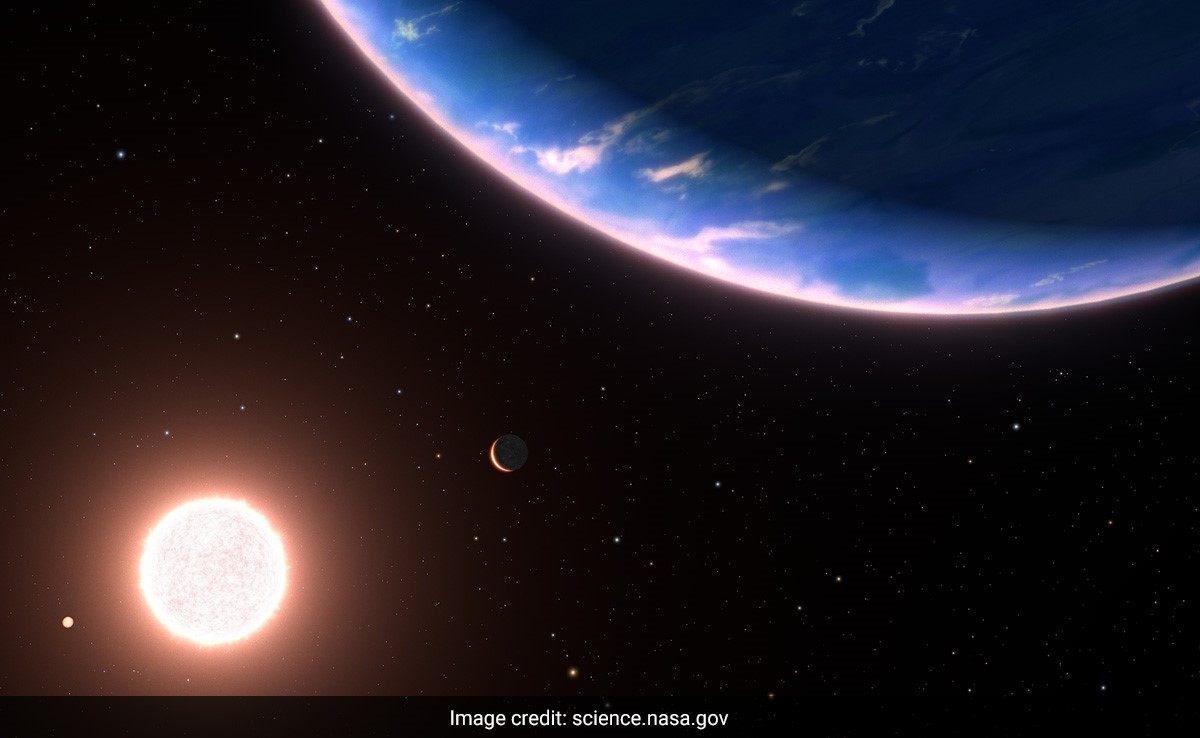
The newly discovered exoplanet is as hot as Venus, according to NASA.
New Delhi:
In a breakthrough, NASA astronomers have identified the smallest exoplanet using a Hubble Space Telescope where water vapour has been detected in the atmosphere. The planet GJ 9827d, at only approximately twice Earth’s diameter, could be an example of potential planets with water-rich atmospheres elsewhere in our galaxy.
The newly discovered exoplanet is as hot as Venus, at 800 degrees Fahrenheit, according to NASA.
GJ 9827d was discovered by NASA’s Kepler Space Telescope in 2017 and it completes an orbit around a red dwarf star every 6.2 days. The star, GJ 9827, lies 97 light years from Earth in the constellation Pisces, according to NASA.
“This would be the first time that we can directly show through atmospheric detection, that these planets with water-rich atmospheres can actually exist around other stars,” said team member Bjorn Benneke of the Trottier Institute for Research on Exoplanets at the University of Montreal.
“This is an important step toward determining the prevalence and diversity of atmospheres on rocky planets.”
“Until now, we had not been able to directly detect the atmosphere of such a small planet. And we’re slowly getting in this regime now,” added Benneke.
Giving insights about planet GJ 9827d, Benneke said, “At present, the team is left with two possibilities. The planet is still clinging to a hydrogen-rich envelope laced with water, making it a mini-Neptune. Alternatively, it could be a warmer version of Jupiter’s moon Europa, which has twice as much water as Earth beneath its crust.
“The planet GJ 9827d could be half water, half rock. And there would be a lot of water vapour on top of some smaller rocky body,” he said.
According to the space agency, the Hubble program has observed that the planet GJ 9827d during 11 transits were spaced out over a span of three years. During transits, starlight is filtered through the planet’s atmosphere and has the spectral fingerprint of water molecules, it said.
“Observing water is a gateway to finding other things,” said Thomas Greene, an astrophysicist at NASA’s Ames Research Center in California’s Silicon Valley.
The space agency is now focused on discovering the total inventory of a planet’s elements which can be used to compare to the star it orbits and understand its formation.




